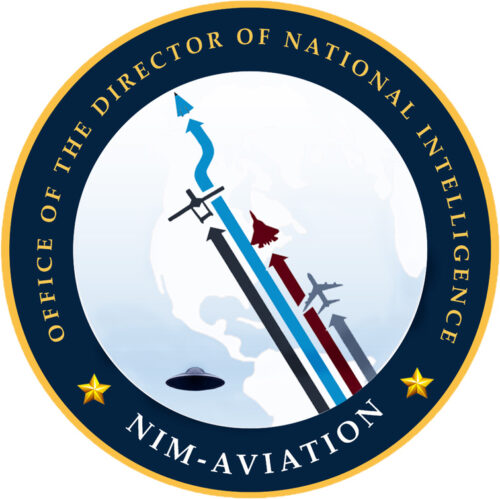Install the app
How to install the app on iOS
Follow along with the video below to see how to install our site as a web app on your home screen.
Note: This feature may not be available in some browsers.
You are using an out of date browser. It may not display this or other websites correctly.
You should upgrade or use an alternative browser.
You should upgrade or use an alternative browser.
Konflikti lähiavaruudessa
- Viestiketjun aloittaja ctg
- Aloitus PVM
The mission will attempt to slightly change an asteroid's motion in a way that can be accurately measured using ground-based telescopes. DART's target Dimorphos is approximately 530 feet (160 meters) in diameter, and orbits Didymos, approximately 2,560 feet (780 meters) in diameter. Since Dimorphos orbits Didymos at much a slower relative speed than the pair orbits the Sun, the result of DART's kinetic impact within the binary system can be measured much more easily than a change in the orbit of a single asteroid around the Sun.
"This is the first time that humans have tried to actually alter the path of an asteroid. This is the type of thing that blockbusters movies are made of!" said Sickafoose, a DART Investigation Team member.
Sickafoose's team has been taking six-hour blocks of images using a 1-meter telescope in Sutherland, South Africa to derive Didymos' light curve on the days leading up to the impact, the impact itself, and will then take more light-curve observations following impact. "Our site is also well placed to observe the impact itself. Changes in brightness near the impact time can be compared with models to help determine the physical properties of Dimorphos. Combining light-curve observations from many sites over a long period of time will allow accurate determination of changes to Dimorphos' orbit as a result of the impact," Sickafoose said.
"By observing the Didymos system before and after the impact, we are supporting the primary goal of determining how much the path of the satellite is altered. Right now, Dimorphos has an orbital period of roughly 11.9 hours. Changes to this orbital period after the impact would indicate the effect of the spacecraft," Sickafoose said. "Taking images of the impact itself can be used to compare with models of ejecta formation and distribution, which should help constrain the physical properties of the asteroid."
"The DART mission is a test to see how effective a kinetic impact is in changing the orbit of an asteroid. We are using this binary asteroid system for this test because it provides a clear and accurate technique to measure the change in orbit," Palmer said.
"I will be building the digital terrain model for Didymos, the binary asteroid system's primary. Additionally, I am responsible for updating and testing the software needed to generate the shape model," Palmer said. "My part supports our scientific understanding of asteroids, especially binary asteroids."
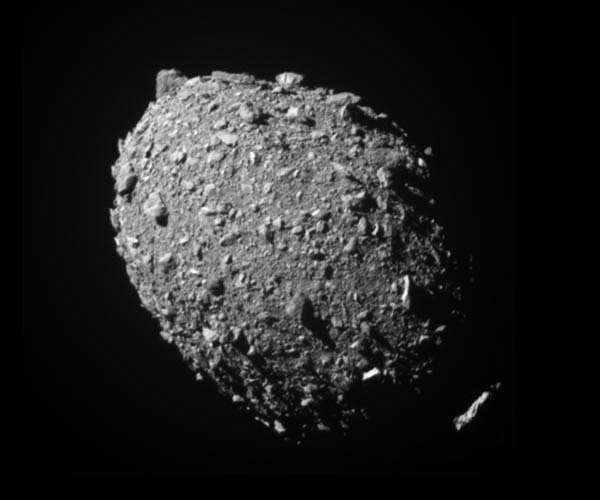
Mission seeks to test technology to mitigate potential asteroid or comet impacts of Earth
Tucson AZ (SPX) Sep 27, 2022 - NASA's Double Asteroid Redirection Test (DART) spacecraft successfully hit its target Sept. 26, and now scientists are analyzing to what degree the kinetic impact changed the trajectory of Dimorphos
www.spacedaily.com
Observations by the Hawaii-based Asteroid Terrestrial-impact Last Alert System (ATLAS), for example, show the Didymos system brightening considerably at the moment of impact. And just afterward, a massive shell of ejected material blasts away from the battered Dimorphos.
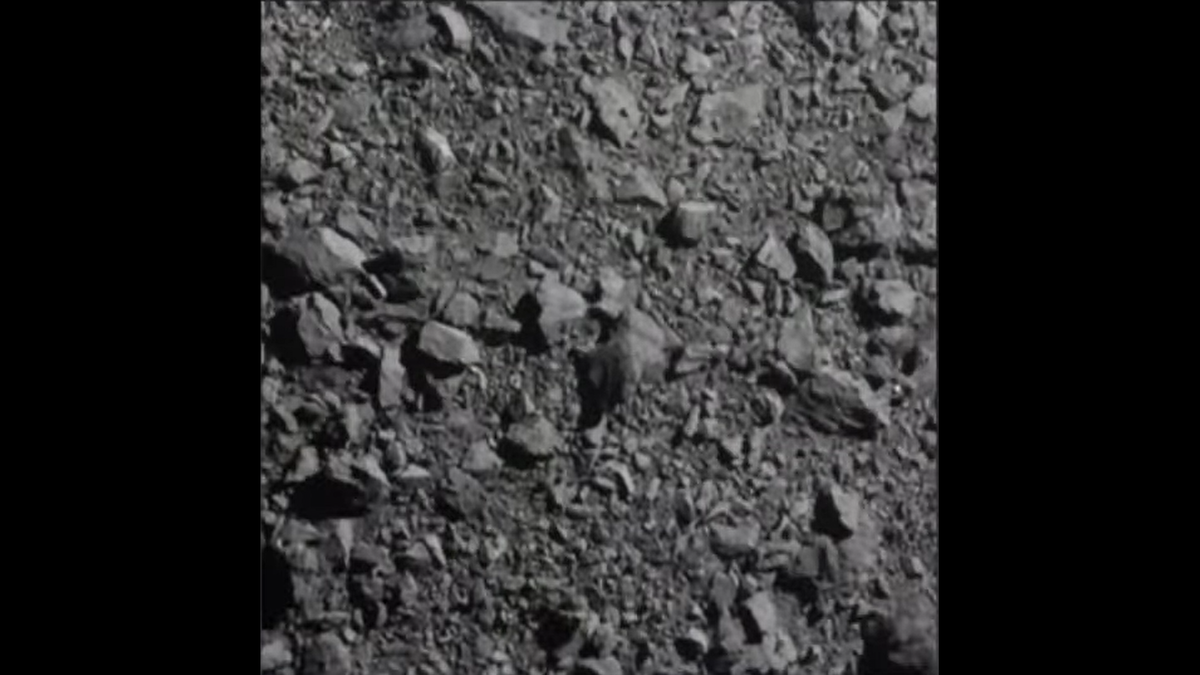
Wow! Telescopes spot DART asteroid impact in deep space (videos)
The dramatic smashup was visible from 7 million miles away.
pöllähdys viittaa Bengun kaltaiseen sorakasaan.One of Las Cumbres Observatory's (LCO) 3.3-foot (1 meter) telescopes at the South African Astronomical Observatory told a similar story, through from a different angle; DART hits Dimorphos while moving from left to right in the frame, rather than from right to left as in the ATLAS shots.
The ATLAS project posted its observations (opens in new tab) on Twitter late Monday night, as did a member of the LCO team (opens in new tab). Both time-lapse videos are well worth a few moments of your time.
The 560-foot-wide (170 meters) Dimorphos poses no danger to Earth, and neither does Didymos, which is about 2,560 feet (780 m) across. NASA just used the space-rock system for target practice, to test out the "kinetic impact" strategy of asteroid deflection.
Scientists will now use a variety of telescopes to measure how much the impact changed Dimorphos' orbit around Didymos. Such data will teach them about the effectiveness of the kinetic impact technique, aiding future efforts to nudge dangerous space rocks away from Earth. And we will need to deal with a big incoming asteroid at some point, experts stress; it's a matter of when, not if.
A new official logo for a U.S. Intelligence Community office focused on aerial threats and related security issues, particularly in the skies over the United States, is turning heads for its inclusion of a depiction of a flying saucer. This comes at a time of reinvigorated interest within the U.S. government, as well as the public at large, in unidentified flying objects, or UFOs, which are currently now referred to officially as unidentified aerial phenomena, or UAP. Over the past year or so, the U.S. military, in particular, has been increasingly sparring with members of Congress about how best to respond to the potentially very real threats that UAP present.
The logo in question is the official seal for the National Intelligence Manager-Aviation (NIM-A), who resides, along with their staff, within the Office of the National Director of Intelligence (ODNI). U.S. Air Force Maj. Gen. Daniel L. Simpson is the current NIM-A, and is also the Executive Director for the National Air Intelligence Integration Office (NAI2O) and Assistant Deputy Chief of Staff of the Air Force for Intelligence, Surveillance, and Reconnaissance (ISR). The logo appears on an official website for both NIM-A and NAI2O, the latter entity also operating under the auspices of ODNI.

Flying Saucer Appears On U.S. Aviation Intelligence Office Logo (Updated)
An official flying saucer-adorned aviation intelligence unit logo has appeared drawing significant interest and speculation online.
The War Zone has reached out to ODNI for more information.
Though the logo, and the inclusion of the flying saucer, in particular, have prompted varying degrees of speculation already, on a core level, the graphical choices are both unsurprising and entirely relevant to NIM-A, as well as NAI2O. Formally established in 2015, NAI2O has its roots in recommendations from the National Commission on Terrorist Attacks upon the United States' report on the infamous 9/11 terrorist attacks on New York City and the Pentagon. The position of NIM-A, a central manager for such issues, was subsequently established.
"NIM-A + NAI2O leads intelligence community efforts to identify, analyze, and integrate intelligence on threats and vulnerabilities in the Air Domain," a mission statement on the current version of the shared website for these two entities reads. "We advocate for intelligence priorites and opportunities to strengthen the safety and security of the Air Domain."
The Asteroid Terrestrial-impact Last Alert System (ATLAS) project on Tuesday tweeted a nine-second video of the impact taken by its telescope in South Africa.
Larry Denneau, the ATLAS co-principal investigator, said the telescope took one image every 40 seconds.
"So the whole sequence that you've seen on Twitter lasts about two hours in real time," he told AFP.
He said the "very, very big" plume was made by dust shooting off the asteroid.
"A lot of the dust is released at a speed that's greater than the gravity of the asteroid, and so it escapes," Denneau said.
The plume expanded to around "several thousand miles in diameter," he added.
In the coming days and weeks astronomers around the world will work to confirm whether the asteroid's trajectory was definitively altered by the impact.
Then the European Space Agency's Hera mission will arrive at Dimorphos in 2026 to survey the surface and discover the extent of DART's impact.
Hera mission principal investigator Patrick Michel said "we are all impressed by the magnitude of the event".
"We have done a lot of damage to Dimorphos," Michel said.
"We have a quantity of ejected matter that is quite incredible."
The amount of matter ripped from the asteroid will help scientists work out exactly how much its trajectory has been affected -- if at all.
"The more material is ejected, the more it deviates," said Eric Lagadec, president of the French Astronomical Society.
"So it's a pretty good sign," he added.
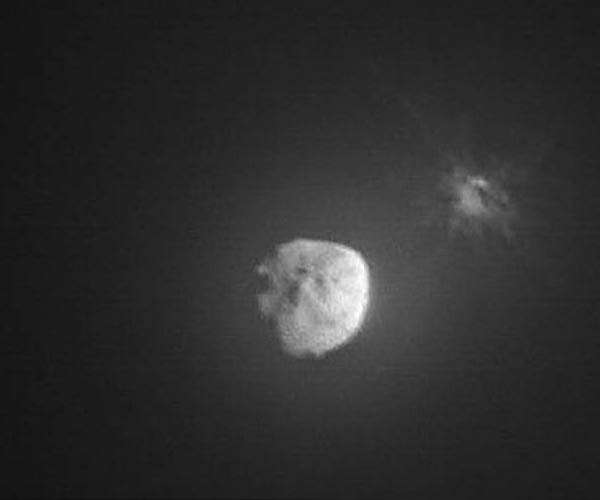
'Incredible': Astronomers hail first images of asteroid impact
Paris (AFP) Sept 28, 2022 - The asteroid is flying through space in the grainy black and white video, when suddenly a massive cloud of debris sprays out in front of it, meaning only one thing: impact.
www.spacedaily.com
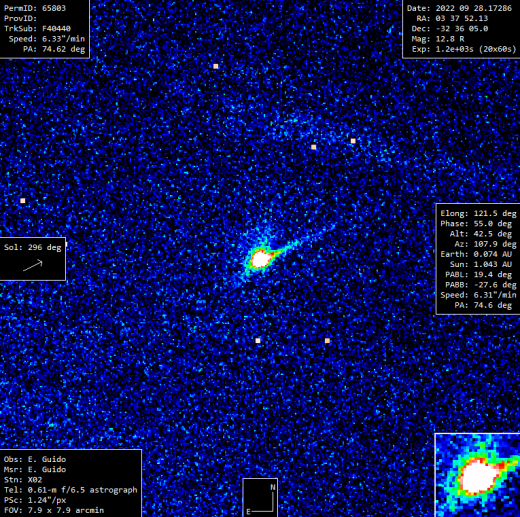
spaceweather.com"This shows the asteroid about 29 hours after impact," says Guido, who used a remotely-controlled 0.61-m telescope in El Sauce, Chile. "It developed a beautiful narrow tail 80 arcseconds long."
NASA was surprised by the easy visibility of DART's impact from Earth. The tail gives observers one more thing to monitor as astronomers look for changes to the asteroid's orbit. Even a slight shift would prove that human tech can alter an asteroid's trajectory--a possible strategy for future Planetary Defense.
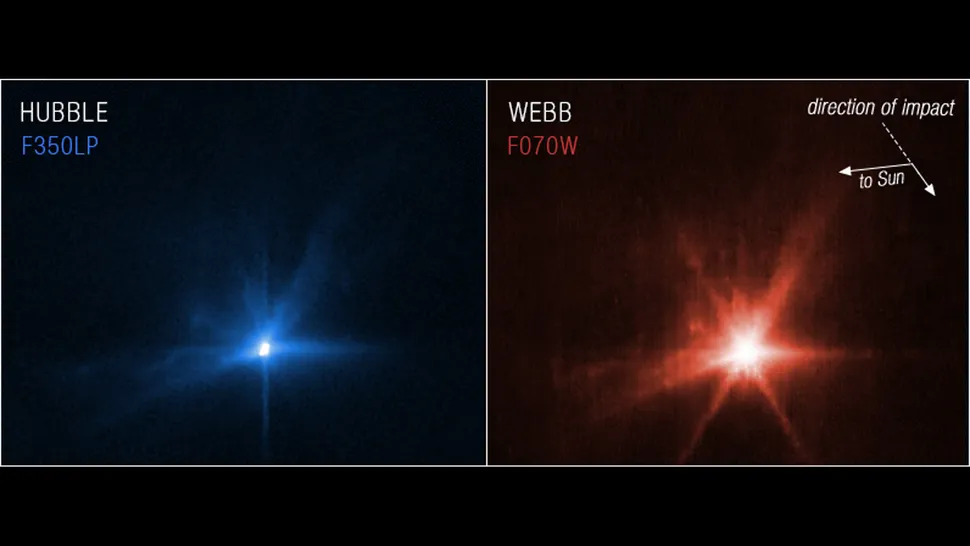
The world's telescopes turned their gaze towards the space rock Dimorphos earlier this week for a historic test of Earth's ability to defend itself against a potential life-threatening asteroid in the future.
Astronomers rejoiced as NASA's Double Asteroid Redirection Test (DART) impactor slammed into its pyramid-sized, rugby ball-shaped target 11 million kilometres (6.8 million miles) from Earth on Monday night.
Images taken by Earth-bound telescopes showed a vast cloud of dust expanding out of Dimorphos -- and its big brother Didymos which it orbits -- after the spaceship hit.
While those images showed matter spraying out over thousands of kilometres, the James Webb and Hubble images "zoom in much closer", said Alan Fitzsimmons, an astronomer at Queen's University Belfast involved in observations with the ATLAS project.
James Webb and Hubble can offer a view "within just a few kilometres of the asteroids and you can really clearly see how the material is flying out from that explosive impact by DART", Fitzsimmons told AFP.
"It really is quite spectacular," he said.
An image taken by James Webb's Near-Infrared Camera (NIRCam) four hours after impact shows "plumes of material appearing as wisps streaming away from the centre of where the impact took place", according to a joint statement from the European Space Agency, James Webb and Hubble.
Hubble images from 22 minutes, five hours and eight hours after impact show the expanding spray of matter from where DART hit.
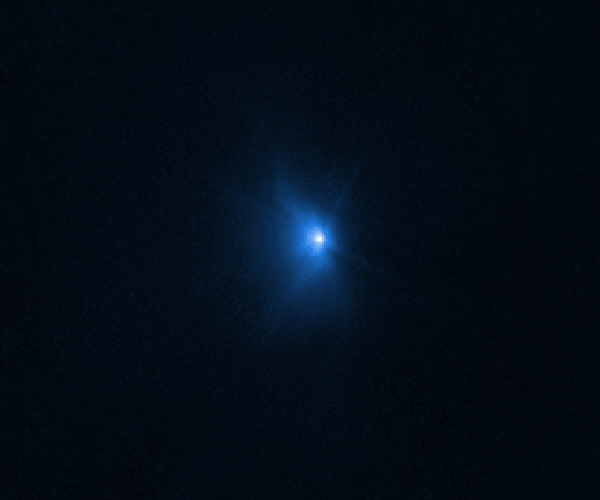
New asteroid strike images show impact 'a lot bigger than expected'
Paris (AFP) Sept 29, 2022 - The James Webb and Hubble telescopes on Thursday revealed their first images of a spacecraft deliberately smashing into an asteroid, as astronomers indicated that the impact looks to have been much greater than expected.
www.spacedaily.com
The images depict an impact that looks "a lot bigger than we expected," said Carnelli, the manager of the ESA's Hera mission which intends to inspect the damage in four years.
"I was really worried there was nothing left of Dimorphos" at first, Carnelli told AFP.
The Hera mission, which is scheduled to launch in October 2024 and arrive at the asteroid in 2026, had expected to survey a crater around 10 metres (33 feet) in diameter.
It now looks like it will be far bigger, Carnelli said, "if there is a crater at all, maybe a piece of Dimorphos was just chunked off."
The true measure of DART's success will be exactly how much it diverted the asteroid's trajectory, so the world can start preparing to defend itself against bigger asteroids that could head our way in the future.
Viimeksi muokattu:
The U.S. Space Force said it awarded contracts to Millennium Space Systems and Firefly Space Transport Services to support a 2023 mission that will demonstrate the ability to rapidly develop and launch a satellite.
Small satellite company Millennium Space Systems will deliver the on-orbit and ground segments for the mission, dubbed VICTUS NOX, and Firefly will provide the launch service, according to the Sept. 30 statement. The Space Force and Millennium told C4ISRNET the value of the company’s award is “undisclosed at this time.” Firefly said its contract is valued at $17.6 million.
VICTUS NOX is part of the service’s Tactically Responsive Space program, run by the Space Safari office and seeks to demonstrate the ability to rapidly execute an end-to-end mission in response to operational needs. The program flew its first mission last summer on a Northrop Grumman Pegasus XL rocket, which carried an experimental space domain awareness satellite.
That effort set records for acquisition and fielding timelines, completing the development process in 11 months — a feat that usually takes two to five years. The program then executed a 21-day call-up period during which it retrieved the payload, integrated it with the launch vehicle and sent it to orbit.
For VICTUS NOX, Latin for “conquer the night,” Space Safari wants to compress that timeline even further by reducing the call-up period to just 24 hours.
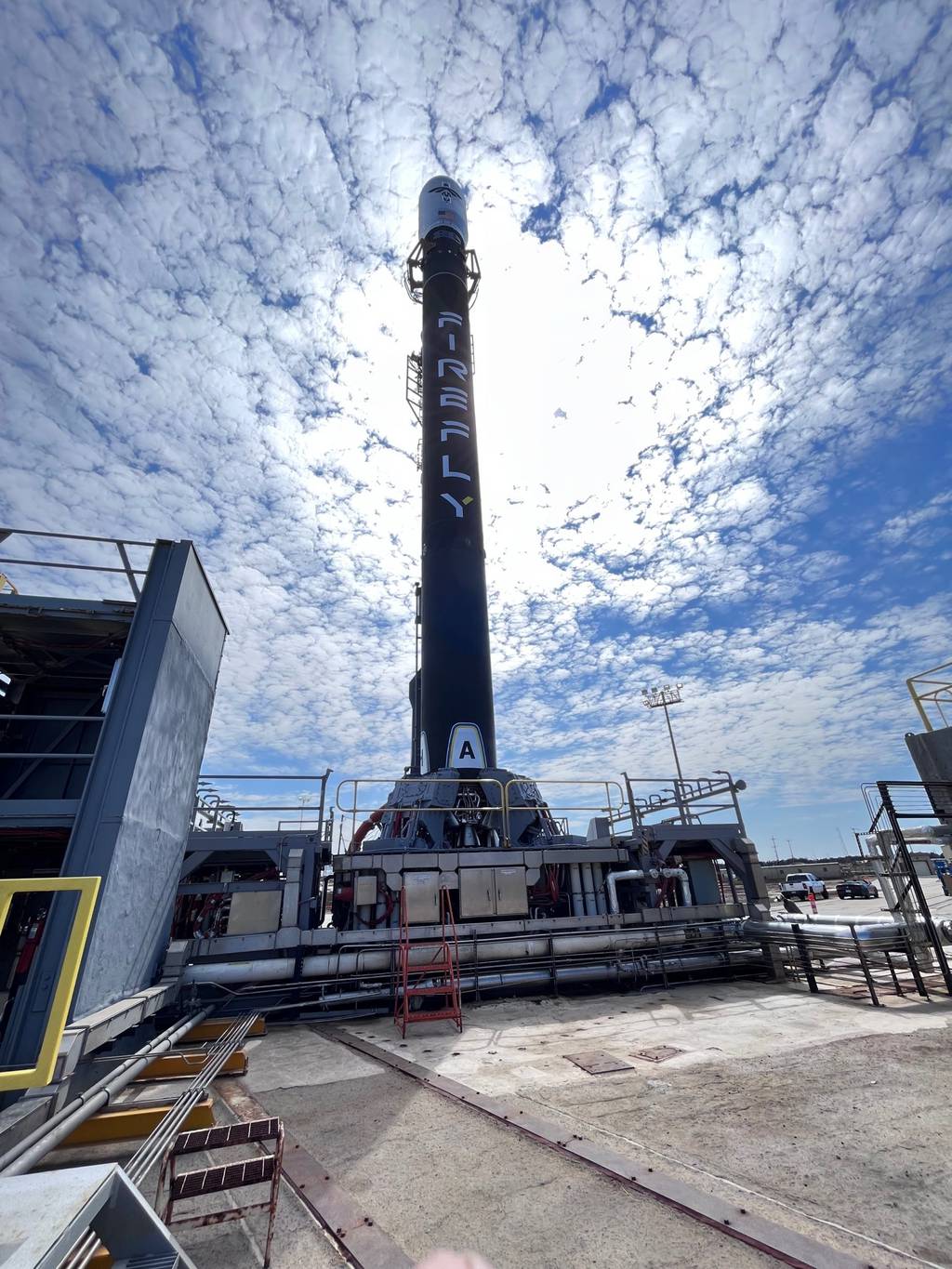
Space Force awards rapid satellite launch demonstration contracts
Millennium will deliver the ground and on-orbit segments of the program and Firefly will provide the responsive launch service.
While its primary mission is looking for foreign spacecraft (or space debris) orbiting the Earth, the telescope can be repurposed for other astronomical observations. SST can track "faint objects in deep space to help predict and avoid potential collisions, as well as detect asteroids and comets," according to the Space Force statement.
The telescope was tested at White Sands Missile Range in New Mexico between 2011 and 2017 with the Defense Advanced Research Projects Agency, or DARPA. After being handed over to the U.S. Air Force in 2017, the military decided to redeploy the telescope to Australia in 2020, according to Space News.
SST is retasking at a time when space debris is becoming a pressing policy problem for the United States. Commercial providers such as SpaceX are sending thousands of Starlink satellites into orbit, increasing the chances for potential collisions. (SpaceX has argued Starlink satellites can dodge in case of trouble.)
Adding to the satellite swarm issue, a Russian anti-satellite test (ASAT) in November 2021 created a large plume of debris that haunted the orbit of the International Space Station for a while. Much of the swarm is still out there, and has also come close to Starlink satellites in their orbit.
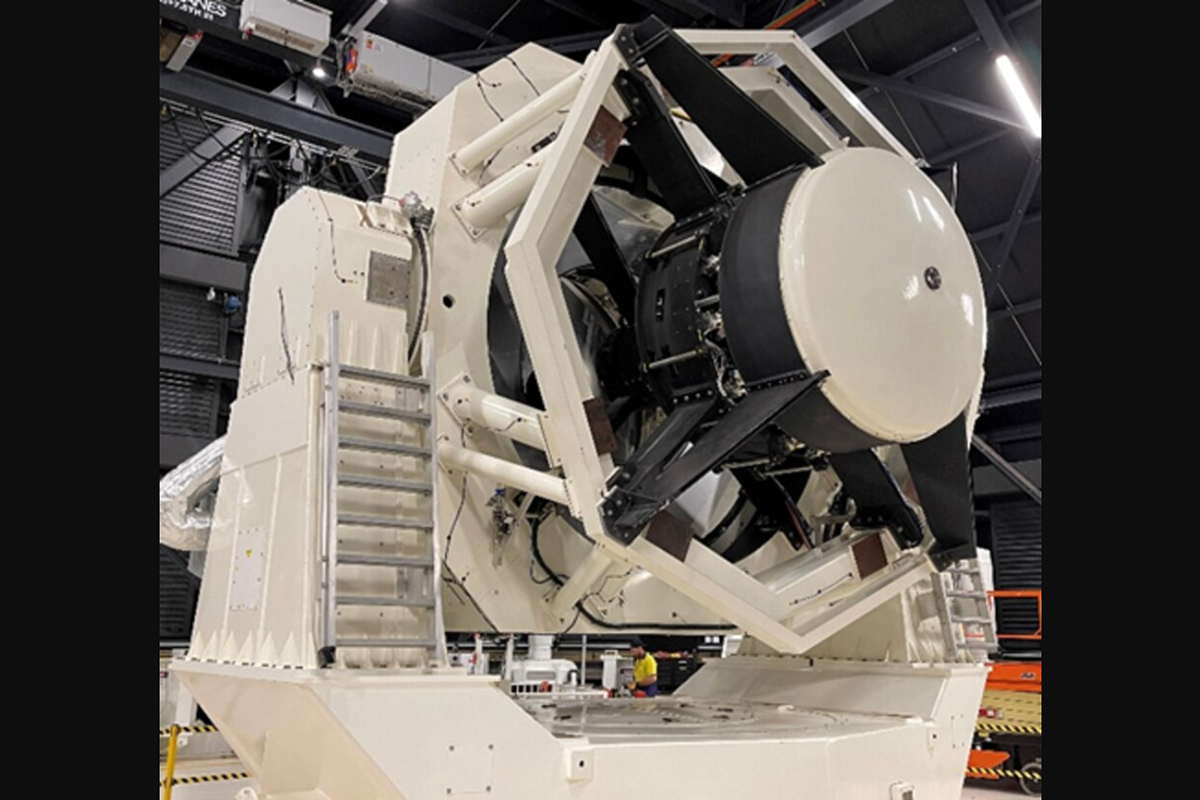
Space Force telescope will hunt foreign spacecraft, asteroids and comets too
The military surveillance telescope is permanently relocated to Australia after a few years of testing in the United States.
A spacecraft that plowed into a small, harmless asteroid millions of miles from Earth succeeded in shifting the orbit of the space rock, Nasa said on Tuesday, announcing the results of its first such test.
The US space agency strategically launched the Double Asteroid Redirection Test (“Dart”) spacecraft into the path of the asteroid, thereby throwing it off course.
Nasa hopes to be able to deflect any asteroid or comet that comes to pose a real threat to Earth.
The Nasa administrator, the former astronaut and Democratic Florida senator Bill Nelson, said: “We showed the world that Nasa is serious as a defender of this planet.”
Lori Glaze, director of Nasa’s planetary division, said: “Let’s all just take a moment to soak this in. We’re all here this afternoon because for the first time ever, humanity has changed the orbit of a planetary body.”
“I am absolutely thrilled about today’s announcement of the orbital period change due to the Dart impact,” said Cristina Thomas, Dart’s principal investigator. “I am constantly impressed by this team and the phenomenal observations that they were able to collect in the two weeks since the impact. Our team has been preparing for these observations for years as we worked to understand the pre-impact orbital period and this result is a testament to how prepared we were for this moment.”
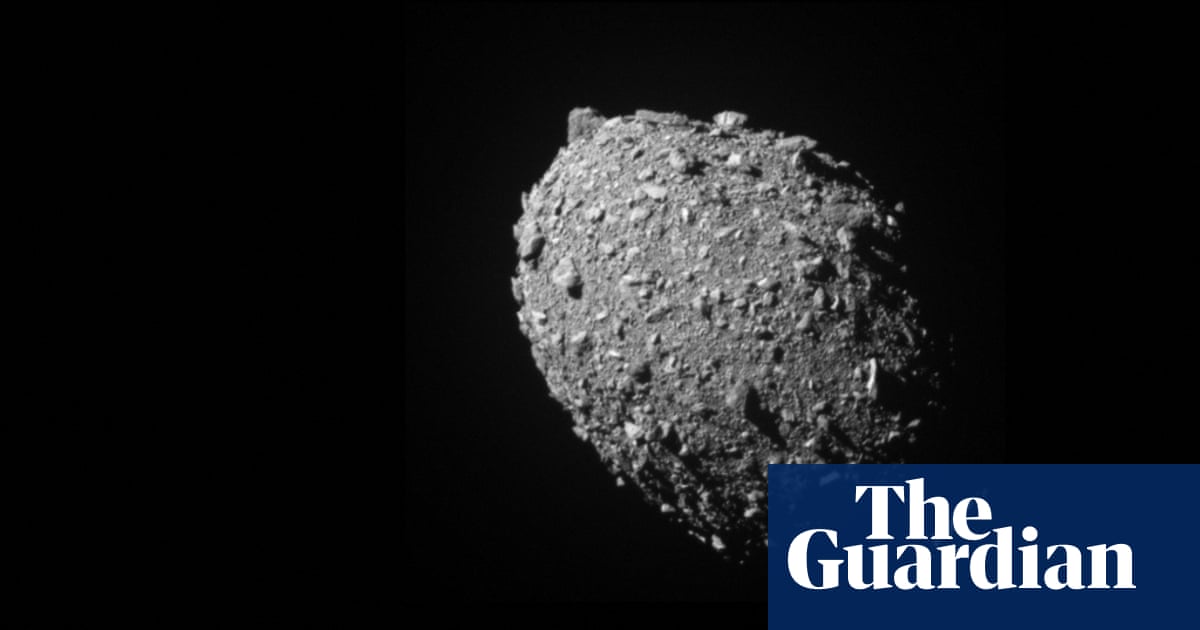
Nasa says Dart mission succeeded in shifting asteroid’s orbit
Space agency attempted first test of its kind two weeks ago to see if in the future a killer rock could be nudged out of Earth’s way
kimmoke
Kersantti
Tässäkin asiassa on sama kuin ydinaseen kanssa.
Jos hallinnossa/puolustusvoimissa on ainoatakaan tolkkua ihmistä, esim venäjä ei ala pöljäileen kiertoradalla.
Ei kai kiinalaisetkaan niin tyhmiä ole että antaisivat venäjän tuhota avaruuden pirstaloimalla kiertoradalle miljuuna tappavaa partikkelia. Sehän tärväisi kiinan avaruusvalloituksen ja xi-pin-pong olisi hyvin vihainen.
Jos hallinnossa/puolustusvoimissa on ainoatakaan tolkkua ihmistä, esim venäjä ei ala pöljäileen kiertoradalla.
Ei kai kiinalaisetkaan niin tyhmiä ole että antaisivat venäjän tuhota avaruuden pirstaloimalla kiertoradalle miljuuna tappavaa partikkelia. Sehän tärväisi kiinan avaruusvalloituksen ja xi-pin-pong olisi hyvin vihainen.
Kummatkin on tehneet testejä ja naapuri on uhannut kurmoottavansa satelliitteja.Ei kai kiinalaisetkaan niin tyhmiä ole että antaisivat venäjän tuhota avaruuden pirstaloimalla kiertoradalle miljuuna tappavaa partikkelia.
Alusta operoi Yhdysvaltain avaruusvoimat, joka on yksi maan asevoimien puolustushaaroista. X-37B:n todellista käyttötarkoitusta ei tiedetä, mutta Yhdysvaltain epäillään käyttävän sitä vakoiluun. Aluksen uskotaan myös kykenevän tuhoamaan muiden maiden satelliitteja.
USA:n asevoimien salainen avaruuslentokone X-37B teki ennätyksen – 908 päivää kestäneen operaation tarkoituksen tietää vain hyvin harva
Salaperäisen X-37B-aluksen todellista käyttötarkoitusta ei tiedetä.

